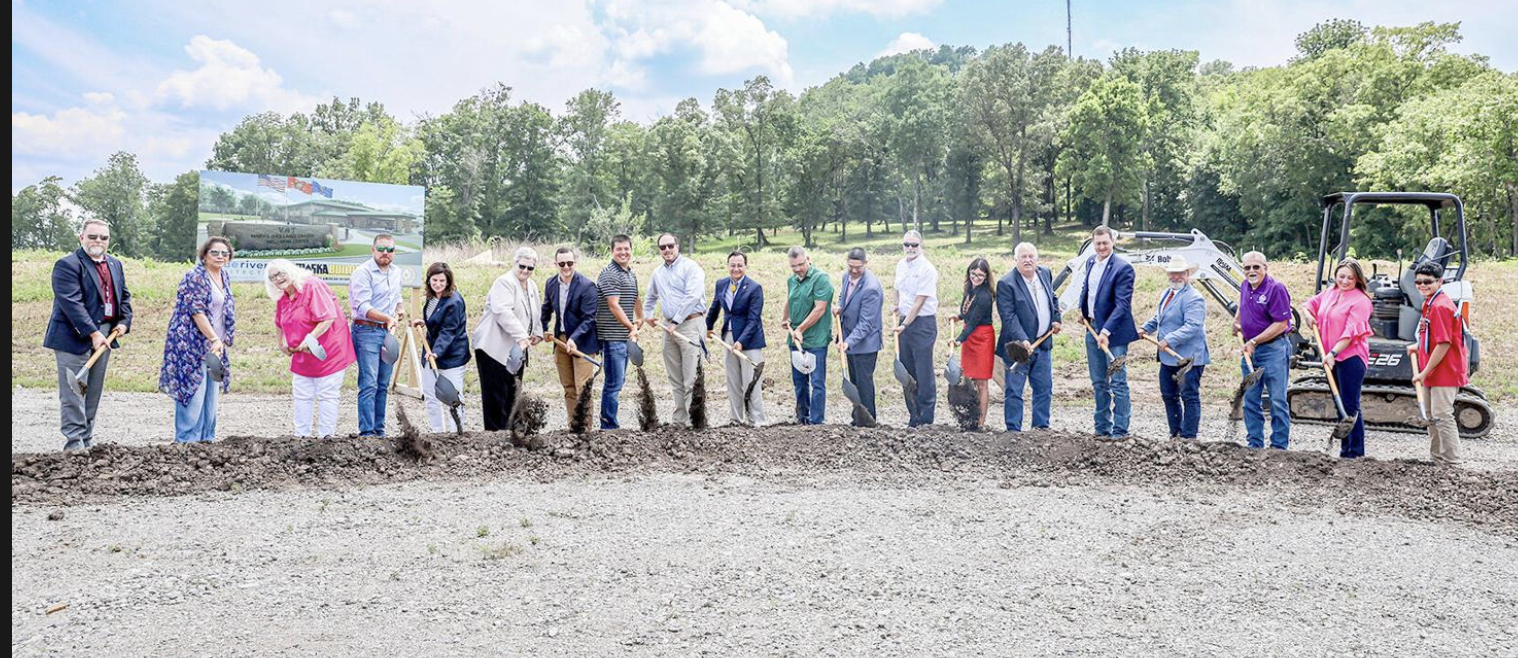
- Details
- By Chuck Hoskin Jr
Guest Opinion. At Cherokee Nation, we have built the largest health care system in Indian Country, providing excellent care to our citizens. However, the foundations of good health don’t start in hospitals and clinics. Many of the most powerful health and wellness tools are found in what we do before we need medical care.
By getting exercise, physical therapy, nutrition guidance, and other wellness activities, we can prevent and manage serious conditions like diabetes and hypertension. Proactively addressing these issues can dramatically reduce health care costs, and, most importantly, help Cherokees feel better and live long, fulfilling lives.
Two years ago, Deputy Chief Bryan Warner and I advocated for a shift toward promoting wellness within communities across the Cherokee Nation. The 2021 Public Health and Wellness Act dedicated a portion of our Health Services revenue to public health. We worked closely with the Council of the Cherokee Nation to invest in facilities that support a healthy lifestyle.

One example of this commitment is the recent groundbreaking of the new Mary L. (Holland) Carson Wellness Center, a two-story, 50,000-square-foot center next to the Wilma P. Mankiller Health Center. The state-of-the-art facility represents an $18 million investment in Stilwell and Adair County. We also broke ground at the new Salina Health Center in Mayes County, which will include a wellness center and outdoor walking trail. The return on these investments will be measured in generations of healthier citizens.
These efforts are just the start of programming planned throughout the 14-county Cherokee Nation Reservation. We are bridging the gap to ensure that all Cherokee people on our Reservation can access wellness programs and services. These sites, with more to come soon, are so much more than brick and mortar. They represent hope, determination and a new era of wellness opportunities for Cherokees.
Cherokees face many different situations on their road to health, so our approach to wellness is diverse and holistic. Future facilities will include fitness centers, child care services, teaching kitchens and outdoor spaces, like walking trails and gathering areas, so that the connection between nature and wellness will always be emphasized.
Although federal dollars play a role, the Cherokee Nation takes great pride in funding our facilities and programs independently. Using funds generated by Cherokee Nation Health Services means that we can invest where Cherokees need it most, with no strings attached. Cherokee Nation is growing in self-sufficiency, and healthier communities will power that growth even further. We continue to be inspired by the legacy of Chief Mankiller, who championed Cherokee people taking care of their own.
Health discrepancies have been a hurdle for Indian Country for far too long. Cherokee Nation is determined to address health and wellness head-on, so that we can spend less time and money treating diseases and more on building community and pursuing our dreams. Thanks to the hard work of our Public Health Department and many others supporting wellness, the Cherokee people’s future is brighter and healthier than ever.
Chuck Hoskin, Jr. is the principal chief of the Cherokee Nation.
More Stories Like This
The Absence of October's Job Report Shows Why Native American Communities Need Better DataTribal IDs Are Federally Recognized. ICE Agents Are Ignoring Them.
Thanksgiving: Part of "Broken Circle Holiday"
Thanksgiving is a Tradition. It's Also a Lie
Decisions About Us, Without Us: Education Dismantling Ignores Tribal Nations
Help us tell the stories that could save Native languages and food traditions
At a critical moment for Indian Country, Native News Online is embarking on our most ambitious reporting project yet: "Cultivating Culture," a three-year investigation into two forces shaping Native community survival—food sovereignty and language revitalization.
The devastating impact of COVID-19 accelerated the loss of Native elders and with them, irreplaceable cultural knowledge. Yet across tribal communities, innovative leaders are fighting back, reclaiming traditional food systems and breathing new life into Native languages. These aren't just cultural preservation efforts—they're powerful pathways to community health, healing, and resilience.
Our dedicated reporting team will spend three years documenting these stories through on-the-ground reporting in 18 tribal communities, producing over 200 in-depth stories, 18 podcast episodes, and multimedia content that amplifies Indigenous voices. We'll show policymakers, funders, and allies how cultural restoration directly impacts physical and mental wellness while celebrating successful models of sovereignty and self-determination.
This isn't corporate media parachuting into Indian Country for a quick story. This is sustained, relationship-based journalism by Native reporters who understand these communities. It's "Warrior Journalism"—fearless reporting that serves the 5.5 million readers who depend on us for news that mainstream media often ignores.
We need your help right now. While we've secured partial funding, we're still $450,000 short of our three-year budget. Our immediate goal is $25,000 this month to keep this critical work moving forward—funding reporter salaries, travel to remote communities, photography, and the deep reporting these stories deserve.
Every dollar directly supports Indigenous journalists telling Indigenous stories. Whether it's $5 or $50, your contribution ensures these vital narratives of resilience, innovation, and hope don't disappear into silence.
 The stakes couldn't be higher. Native languages are being lost at an alarming rate. Food insecurity plagues many tribal communities. But solutions are emerging, and these stories need to be told.
The stakes couldn't be higher. Native languages are being lost at an alarming rate. Food insecurity plagues many tribal communities. But solutions are emerging, and these stories need to be told.
Support independent Native journalism. Fund the stories that matter.
Levi Rickert (Potawatomi), Editor & Publisher
